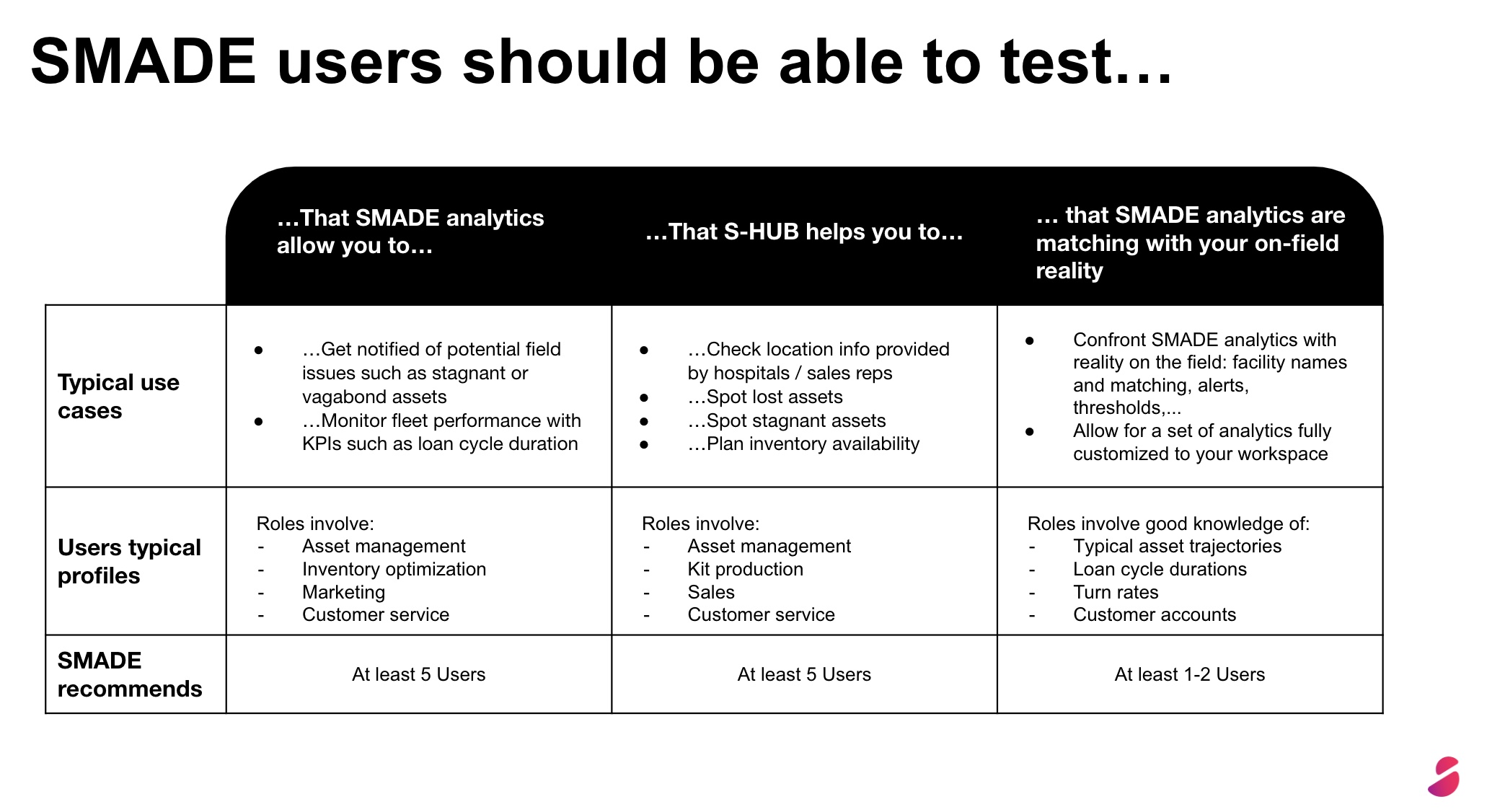Frequently asked questions
-
What is S-HUB?
S-HUB is SMADE proprietary digital platform that receives, analyzes, and reports the field data collected by SMADE trackers. Depending on their SMADE subscription, S-HUB users can log into their S-HUB account to locate their assets on a map, to have a daily update of what happened to their connected assets in the past 24 hours, or to access exhaustive analytics reporting that help them make data-driven decisions.

-
What is SMADE cyber-security policy?
After each data transfer from our hardware to our software (location record, drop, washing, autoclaving, etc.), SMADE trackers send data to the cloud (S-HUB proprietary digital platform). The unique communication is established only after a secured authentication of valid certificates, then encrypted on both sides using recommended standards (above TLS 1.2). Every communication between the device and the cloud will be logged and traceable.

-
How does SMADE protect users' personal data?
SMADE only asks for the minimum information to register users into a workspace and create an organization:
- Name of divisions that are part of your account
- Name and contact of all S-HUB users
This minimum data is stored in our secured database, managed through Amazon Web Services.

-
Who owns the data?
As a customer, you remain the owner of your data. SMADE may access, process, or use customer data as necessary for product improvement purposes.

-
What servers does SMADE use? What if the servers are down?
SMADE uses a cloud-based solution hosted in Amazon Web Services. This way, SMADE benefits from Amazon’s policy for ensuring server and data availability, even when servers are down. For EU customers, the servers are located in the EU, and for US customers, they are located in the US.

-
Does S-HUB have APIs?
S-HUB has a pre-existing set of APIs. However, if needed, S-HUB development team will create a specific set of APIs (“client-ready APIs”). We will also conduct extra development on a regular basis and progressively extend and refine our API list.

-
Can you integrate S-HUB data to your ERP?
An ERP integration is possible. It would be part of a custom development with SMADE team. Depending on your ERP and the amount of development work required, S-HUB integration to your ERP can be included in your Power Plan. It can be done by using the existing set of S-HUB APIs, or through custom development. The best approach will be discussed between your technical team and SMADE.

-
What set of basic data can be easily extracted from S-HUB and pulled into an ERP?
Technically, any data with added value provided in S-HUB can be pulled from S-HUB to your ERP, namely: smart tray and smart device information, usage, content and location, analytics KPIs, etc. But, no matter what type of data, an analysis of the requirements and targeted ERP system needs to be conducted.

-
How many users can you add to S-HUB?
As many as you want for permanent contracts. During initial pilots they are limited to 5 users.

-
What filters can S-HUB users apply to read their data?
Many data filters are available to S-HUB users. Some examples include, but are not limited to:
- Location
- UDI
- Reception date
- Product range
- Surgery type
- Dollar value
- Etc.

-
What do we call advanced analytics?
Advanced analytics are the ones available with SMADE Power Plan. They come on top of all of basic analytics that are accessible through the other SMADE plans (Location, Cold location, Lifecycle, etc. …).
Advanced analytics means:
- Setting your own thresholds (e.g., how many times an asset can go through autoclaving before needing maintenance)
- Customizing your frequency of updates (e.g., how many times per week do you want to be alerted)
- Accessing full history of your data during the entire period of your membership (as opposed to last 6 months only for basic analytics)
- Unlimited downloads of data reports (as opposed to ‘read-only’ feature in basic plans)









